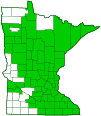black cherry
(Prunus serotina var. serotina)
Conservation • Wetland • Description • Habitat • Ecology • Use • Distribution • Taxonomy
Description |
||
Black cherry is a small to medium-sized, moderately fast-growing, deciduous tree. It rises on a single stem from a shallow, spreading root system and occasional 36″ to 48″ long sinker roots. Most roots are within 24″ of the soil surface. It is not colonial. It is the largest member of the Prunus family. In the eastern part of its range it is a large, well-formed tree and is commonly up to 129′ in height and 48″ in diameter at breast height. In Minnesota it is usually a small to medium sized tree, 40′ to 60′ tall and up to 24″ in diameter. On good sites it can reach 80′ or more in height but is rarely more than 100′ tall. It is moderately long-lived, often reaching 150 years of age, with older individuals up to 200 years old. The trunk is slender, sinuous, little tapered, and often crooked. In the forest it develops a long, straight, branch-free bole and a smallish, rounded, taller than wide crown. On open sites the bole is shorter and the crown is broad and irregular. The branches are arching with drooping tips. The bark on young trees is smooth and dark reddish-brown, with numerous conspicuous, grayish, horizontal lines (lenticels). As it ages the bark turns light grayish-brown. On mature trees the bark remains thin and is broken into squarish, flat scales that curl outward at the sides. They have the appearance of burnt potato chips. The exposed bark beneath the curled edges is reddish-brown. As the tree ages the scales break off revealing smaller, darker scales beneath. Bark on older trees thicker but still relatively thin and is broken into layers of reddish-brown to blackish scales. The scales are small and squarish, lack lenticels, and have upturned edges. They have the appearance of burnt corn flakes. The very dark, blackish, very scaly bark makes for easy identification of this tree in all seasons. First-year twigs are slender, hairless, and green to reddish, soon becoming dark reddish-brown. Second-year twigs are grayish-brown with round to oval lenticels and tiny black spots. They have an outer grayish skin that wears off. When scratched the twigs have a bitter almond odor and taste. Buds are reddish-gray, sharply pointed, and small, only about ⅛″ long. They are held slightly away from the twig. They are covered with about 10 scales. The scales are pointed, glossy, bright reddish-brown at the tip, and green at the base. The leaf scars are small, semi-circular, raised and have 3 bundle scars. The pith is solid. The leaves are alternate, usually oblong elliptical, sometimes somewhat egg-shaped, 2¼″ to 4¾″long, and 1″ to 2″ wide. They are 2 to 3 times as long as wide. They are attached to the twig on ⅜″ to ⅞″ long leaf stalks. The leaf stalk is usually hairless and has 1 or a few stalkless glands near the point where the blade attaches to the stalk. The blade is tapered or rounded at the base and tapers to a point at the tip with concave sides along the tip. There is a prominent midrib and usually 15 or more pairs of inconspicuous lateral veins. The upper surface is dark green, shiny, and hairless. The lower surface is pale green and hairless except for a narrow patch of rust-colored hairs along both sides of the midvein on the lower ½ or ⅓ of the blade. The margins are finely, singly toothed. The teeth are short, inward-curved, and tipped with a minute, hard, gland-like thickening. The leaves turn yellow to yellowish-red in autumn. The inflorescence is a dense, elongated, unbranched cluster (raceme) of 20 to 60 flowers at the end of short, leafy shoots of the current season. The racemes are cylinder shaped, 3″ to 6″ long, and about ¾″wide. Each flower is on a hairless, ⅛″ to 5 ⁄16″ long stalk. The flowers are ⅜″ to ⅝″ in diameter. They open in mid-May to mid-June when the leaves reach full size. There are 5 sepals, 5 petals, 15 to 22 stamens, and 1 style. The sepals are green and 1 ⁄64″ to 1 ⁄32″ long. The petals are white, 1 ⁄16″ to ⅛″ long, and conspicuously narrowed at the base (clawed). The claw is about 1 ⁄32″ long. The expanded portion of the petal is circular, cupped, and about ⅛″ wide. The stamens have ⅛″ long, translucent green filaments and yellow anthers. The fruit is a fleshy, one-seeded, spherical or inversely egg-shaped, ¼″ to 7 ⁄16″ in diameter drupe. It is green at first, red later in the season, and finally dark reddish-black when it matures in early August to early September. The sepals persist in fruit. The ripe fruit is astringent but edible when ripe. |
||
Height |
||
40′ to 80′ |
||
Record |
||
The champion black cherry in Minnesota is on private property near St. Peter, in Nicollet County. In 2019 it was measured at 120′ tall and 99″ in circumference (31½″ in diameter). |
||
Flower Color |
||
White |
||
Similar Species |
||
Chokecherry (Prunus virginiana var. virginiana) is usually a shrub with multiple stems. The leaves are wider, 1½ to 2 times as long as wide. The lower leaf surface has whitish or yellowish hairs in the axils of the lateral veins. The teeth on the margins are straight, not curved inward. They have a sharp tip with no gland-like thickening. The sepals do not persist in fruit. |
||
Habitat |
||
Dry to moderate moisture. Well-drained, upland forests. |
||
Ecology |
||
Flowering |
||
Mid-May to mid-June |
||
Faunal Associations |
||
Black cherry is a host for eastern tiger swallowtail. |
||
Pests and Diseases |
||
Black cherry finger gall mite (Eriophyes cerasicrumena) causes a small, narrow, erect, finger-like gall on the upper side of leaves. When present, there are a few to many galls on each infected leaf. Cherry Leaf Spot (Blumeriella jaapii) causes small purple spots on the leaves. Later, the spots turn brown, separate from the green tissue, and drop off, leaving a “shot hole”. Eventually, the infected leaf turns yellows and falls off. Rust Fungus (Tranzschelia pruni-spinosae var. americana) |
||
Use |
||
|
||
Distribution |
||||
|
Sources |
|||
| 2/21/2023 | ||||
Nativity |
||||
Native |
||||
Occurrence |
||||
Common |
||||
Taxonomy |
|||
| Kingdom | Plantae (Plants) | ||
| Subkingdom | Pteridobiotina | ||
| Phylum | Tracheophyta (Vascular Plants) | ||
| Class | Magnoliopsida (Dicots) | ||
Order |
Rosales (Roses, Elms, Figs, and Allies) | ||
Family |
Rosaceae (Rose) | ||
| Subfamily | Amygdaloideae | ||
| Tribe | Amygdaleae | ||
Genus |
Prunus (Plums, cherries, and Allies) | ||
| Subgenus | Padus | ||
| Section | Laurocerasus | ||
Subordinate Taxa |
|||
|
|||
Synonyms |
|||
Padus virginiana Prunus serotina ssp. eximia Prunus serotina var. eximia |
|||
Common Names |
|||
black cherry rum cherry wild black cherry |
|||
Glossary
Axil
The upper angle where a branch, stem, leaf stalk, or vein diverges.
Claw
A stalk-like narrowed base of some petals and sepals.
Drupe
A fleshy fruit with a single hard, stone-like core, like a cherry or peach.
Filament
On plants: The thread-like stalk of a stamen which supports the anther. On Lepidoptera: One of a pair of long, thin, fleshy extensions extending from the thorax, and sometimes also from the abdomen, of a caterpillar.
Lenticel
A corky, round or stripe-like, usually raised, pore-like opening in bark that allows for gas exchange.
Pith
The spongy cells in the center of the stem.
Raceme
An unbranched, elongated inflorescence with stalked flowers. The flowers mature from the bottom up.
Sepal
An outer floral leaf, usually green but sometimes colored, at the base of a flower.
Visitor Photos |
|||||
Share your photo of this plant. |
|||||
| This button not working for you? Simply email us at info@MinnesotaSeasons.com. Attach one or more photos and, if you like, a caption. |
|||||
Randy |
|||||
Ripening fruit of a black cherry, prunus serotina, August 2019, Freeborn County, Minnesota |
|||||
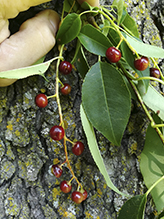 |
|||||
Twin trunks, black cherry on left, bur oak on right |
|||||
_12s.jpg) |
|||||
Massive trunk on an old growth black cherry in a wood near Faribault, MN |
|||||
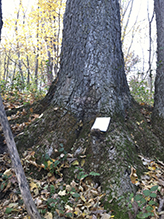 |
|||||
MinnesotaSeasons.com Photos |
|||||
Tree |
|||||
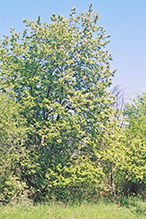 |
|||||
Inflorescence |
|||||
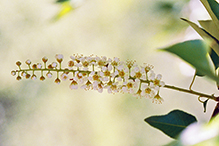 |
|||||
Flower |
|||||
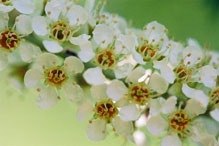 |
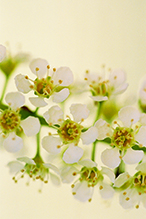 |
||||
Leaves |
|||||
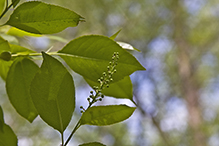 |
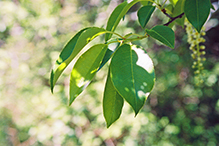 |
||||
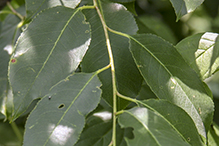 |
|||||
Bark |
|||||
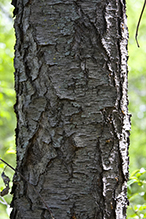 |
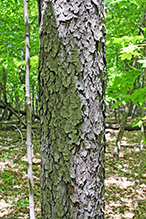 |
||||
Early Spring |
|||||
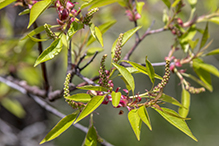 |
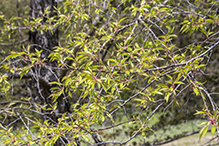 |
||||

Slideshows |
||
| Black Cherry Tree (Prunus serotina) Andree Reno Sanborn |
||

|
||
| Black Cherry (Prunus serotina) Jim Hamilton |
||
About
Uploaded on Jun 18, 2008 Brief species presentation on black cherry (Prunus serotina) |
||

Visitor Videos |
|||
Share your video of this plant. |
|||
| This button not working for you? Simply email us at info@MinnesotaSeasons.com. Attach a video, a YouTube link, or a cloud storage link. |
|||
Other Videos |
|||
| Black Cherry ( Prunus serotina ) identification video wvoutdoorman |
|||
About
Published on Sep 30, 2012 Black Cherry ( Prunus serotina ) identification video. |
|||
| Black Cherry (Prunus serotina) NativNurseries |
|||
About
Published on Aug 1, 2012 Commonly used by our forefathers as a flavoring in rum concoctions as well as in cough syrup and jellies, the black cherry tree is a favorite to both man and game. After the attractive cluster of small white flowers bloom in the spring, this tree wastes no time bearing fruit. Having clusters of cherries in early summer, it is one of the earliest producers in the wild. Almost all birds and most mammals, especially black bear, fox and squirrels can be found near this tree consuming the small, tasty cherries. The black cherry tree has a rapid growth rate and produces fruit at a young age. Another advantage is the high germination rate. The seed that will be spread around by the birds and other critters will quickly grow into many young scrumptious seedlings that deer will be more than happy to browse down for you. If you are looking for something to quickly attract all forms of wildlife to areas of your property, add a couple of these to your list. Just be careful if you plant close to your camp, with all those cherries lying on the ground you may wind up with cherry colored footprints all over your porch. |
|||
| Black Cherry Tree leoni pizzillo |
|||
About
Published on Sep 24, 2012 Identifying the Black Cherry Tree (Prunus Serotina ) |
|||

Visitor Sightings |
|||||
Report a sighting of this plant. |
|||||
| This button not working for you? Simply email us at info@MinnesotaSeasons.com. Be sure to include a location. |
|||||
| Sharon 5/30/2023 |
Location: Minneapolis I just cut down a Chinese black cherry tree in my back yard with a 108” circumference about 2’ above the ground. |
||||
| Randy August 2019 |
Location: Freeborn County, Minnesota Ripening fruit of a black cherry, prunus serotina |
 |
|||
| Randy 12/12/2016 |
Twin trunks, black cherry on left, bur oak on right |
_12t.jpg) |
|||
| Randy 10/21/2015 |
Location: near Faribault, MN Massive trunk on an old growth black cherry in a wood near Faribault, MN |
 |
|||
MinnesotaSeasons.com Sightings |
|||||
Avon Hills Forest SNA, North Unit Badoura Jack Pine Woodland SNA Bertram Chain of Lakes Regional Park Carpenter St. Croix Valley Nature Center Carver Highlands WMA, South Unit Charles A. Lindbergh State Park Clifton E. French Regional Park Clinton Falls Dwarf Trout Lily SNA Forestville/Mystery Cave State Park John Peter Hoffman Spring Brook Valley WMA Mary Schmidt Crawford Woods SNA Minnesota Valley NWR, Black Dog Unit Nerstrand Big Woods State Park Northern Tallgrass Prairie NWR, Rengstorf Unit P.N. and G.M. Nelson Wildlife Sanctuary Prairie Creek WMA, Koester Prairie Unit Robert Ney Memorial Park Reserve Stanley Eddy Memorial Park Reserve |
|||||

|
Created: Last Updated: © MinnesotaSeasons.com. All rights reserved. |
